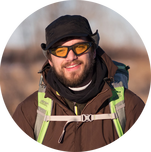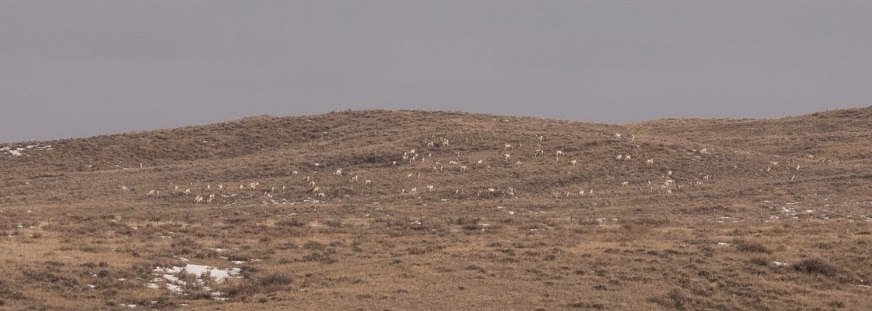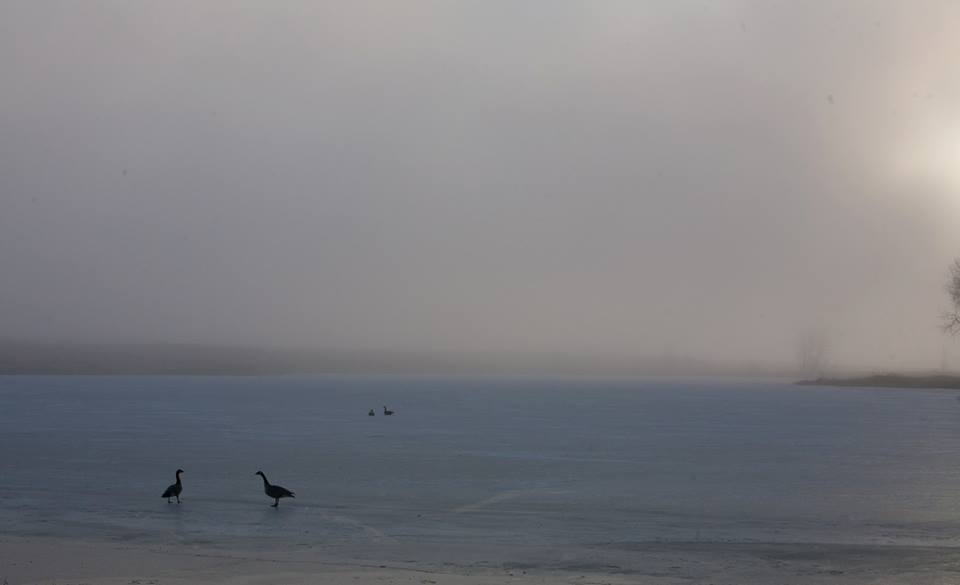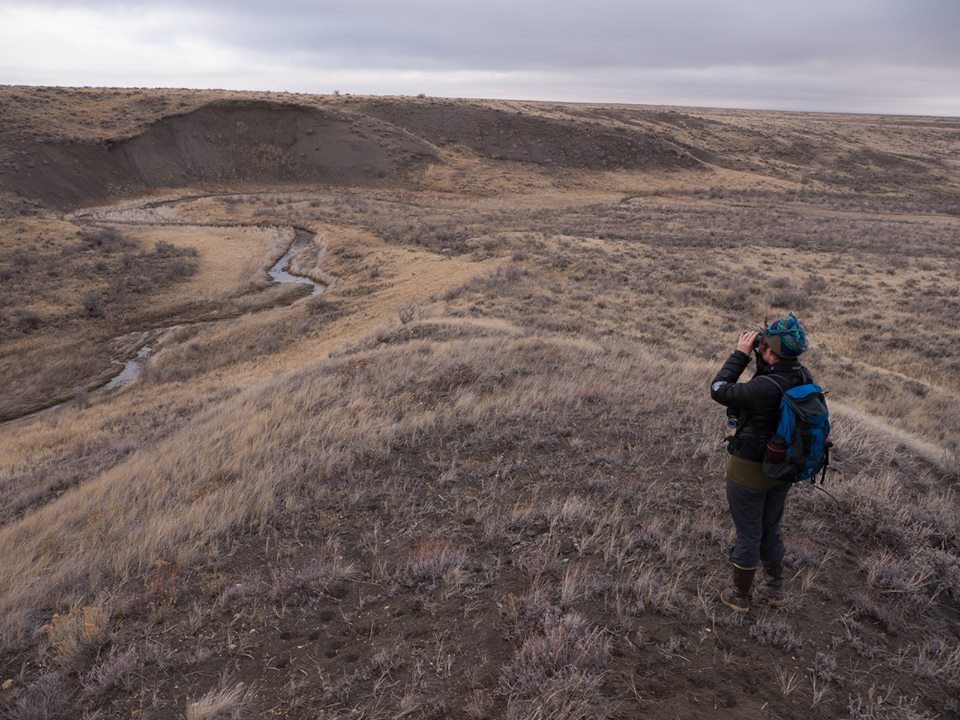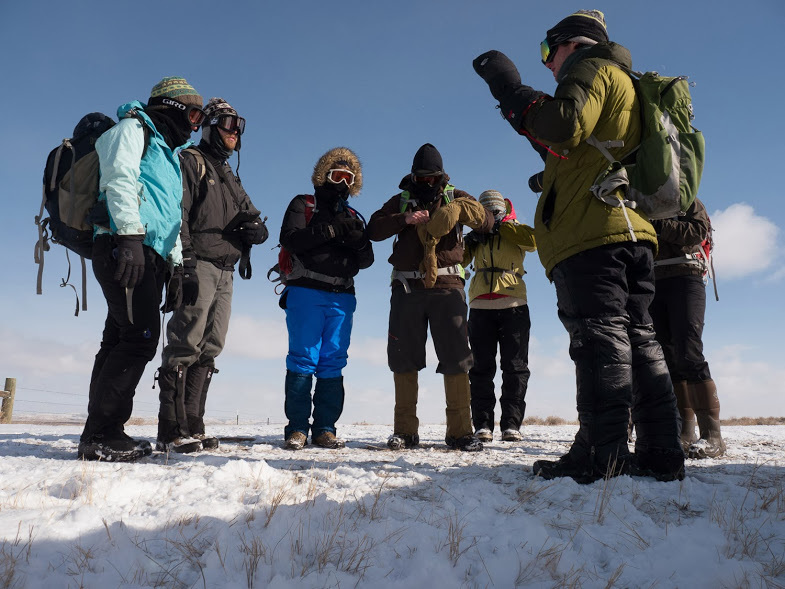Tony Mancuoso is a recent graduate from Mansfield University with a B.S. in geography and a minor in geology. As an undergraduate he concentrated his degree on outdoor recreation leadership.Tony grew up backpacking through the hardwood forests of Eastern Pennsylvania and now enjoys whitewater paddling, climbing, and backpacking. For the past two years he worked as a raft guide and trip leader on the Lehigh River. He was a member of both the February and March Landmark crews. More from Tony can be found on his blog.
From Tony:
Today was my first full day on the American Prairie Reserve. We spent the morning reviewing some of the technical aspects of data entry, and then went into the field in the afternoon. Not only have I never experienced terrain or a climate such as this, I have never spoken with anyone who has. The American Prairie Reserve lies between Phillips and Valley Counties; the two most sparsely populated counties in the contiguous United States. There are no words to describe the remoteness of this region. The lack of human influence here is exemplified by the abundance of wildlife. I have never seen so many wild animals in so brief a time. In our first day on the Sun Prairie, we watched a heard of roughly eighty pronghorn spring into the horizon.
Pronghorn:
Today was my first full day on the American Prairie Reserve. We spent the morning reviewing some of the technical aspects of data entry, and then went into the field in the afternoon. Not only have I never experienced terrain or a climate such as this, I have never spoken with anyone who has. The American Prairie Reserve lies between Phillips and Valley Counties; the two most sparsely populated counties in the contiguous United States. There are no words to describe the remoteness of this region. The lack of human influence here is exemplified by the abundance of wildlife. I have never seen so many wild animals in so brief a time. In our first day on the Sun Prairie, we watched a heard of roughly eighty pronghorn spring into the horizon.
Morning:
We were joined for breakfast today by a Downy Woodpecker, who understandably mistook the log sides of the White Rock Lodge to be a suitable locale for the practice of his pecking. A wind chill factor of -35˚F caused us to scrap our first attempt at hiking a survey transect. The crew from the ASC got us on the radio and issued what I’ve called in my notes the “0˚F Protocol”. If the daily high is not expected to get above zero degrees before wind chill factor, we are supposed to stay home and catalogue data.
We were joined for breakfast today by a Downy Woodpecker, who understandably mistook the log sides of the White Rock Lodge to be a suitable locale for the practice of his pecking. A wind chill factor of -35˚F caused us to scrap our first attempt at hiking a survey transect. The crew from the ASC got us on the radio and issued what I’ve called in my notes the “0˚F Protocol”. If the daily high is not expected to get above zero degrees before wind chill factor, we are supposed to stay home and catalogue data.
Grouse:
If I was forced to choose, I would think that the Greater Sage Grouse would be my favorite animal to see on the Shortgrass Prairie. They are a shatteringly striking animal in appearance. The contrast between shades of black on the belly and white on the wing and breast make this large upland bird unmistakable. However, one of the most developed camouflage patterns in nature hides this bird on the ground. With a spectrum of brown, tan and white along is back and shoulder, this bird can dissolve into the sage undetected by even the keenest vision.
If I was forced to choose, I would think that the Greater Sage Grouse would be my favorite animal to see on the Shortgrass Prairie. They are a shatteringly striking animal in appearance. The contrast between shades of black on the belly and white on the wing and breast make this large upland bird unmistakable. However, one of the most developed camouflage patterns in nature hides this bird on the ground. With a spectrum of brown, tan and white along is back and shoulder, this bird can dissolve into the sage undetected by even the keenest vision.
Epilogue:
In total, I spent forty days living on the American Prairie Reserve. The place has evoked such an emotional response from me that it is hard to place my feelings down on a piece of paper. In my eyes, this is why the work of the American Prairie Reserve is so important. To restore and preserve a wild, native landscape is to invest in the future of our culture. People need a place that will challenge them to rise to the occasion; that will teach them how to swim through the sink-or-swim moments. To preserve the Prairie is to preserve ourselves.
In total, I spent forty days living on the American Prairie Reserve. The place has evoked such an emotional response from me that it is hard to place my feelings down on a piece of paper. In my eyes, this is why the work of the American Prairie Reserve is so important. To restore and preserve a wild, native landscape is to invest in the future of our culture. People need a place that will challenge them to rise to the occasion; that will teach them how to swim through the sink-or-swim moments. To preserve the Prairie is to preserve ourselves.
Find out more about the project and apply for a crew position on the Landmark page. Keep up with ASC by subscribing to ASC’s blog, liking us on Facebook and following us on Twitter (@AdventurScience), Instagram (@AdventureScience) and Google+.

